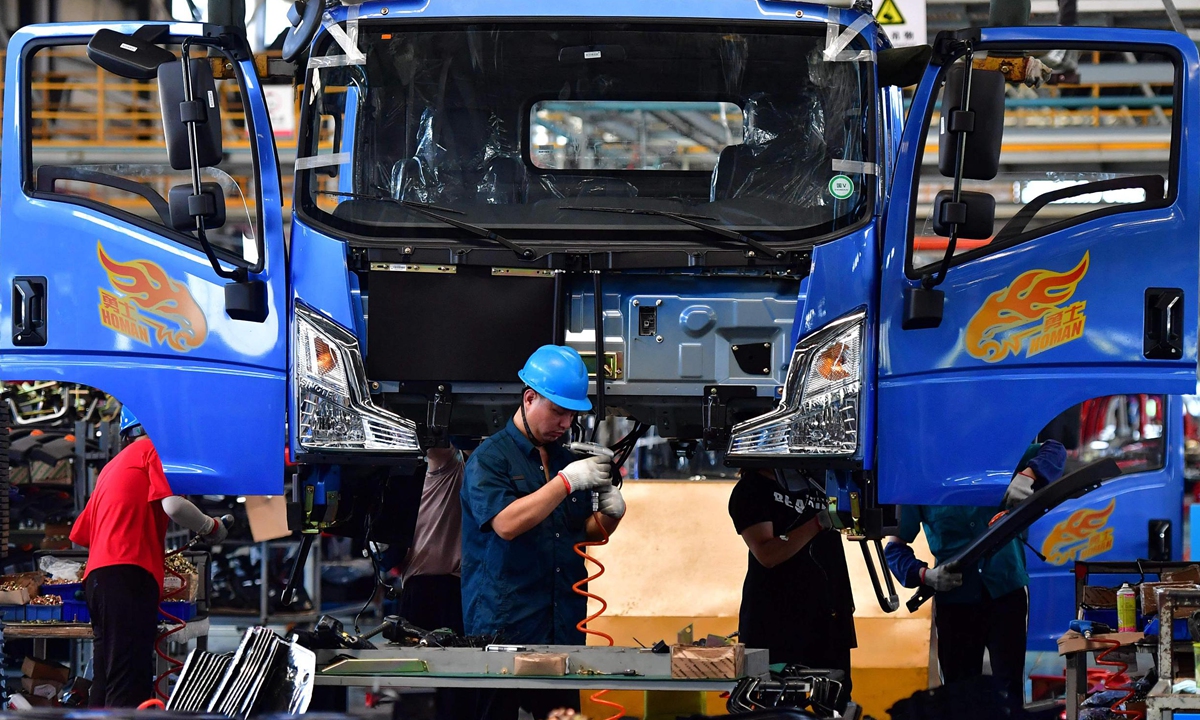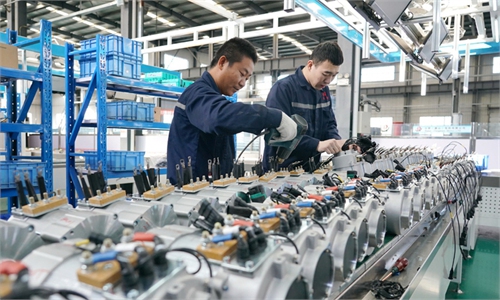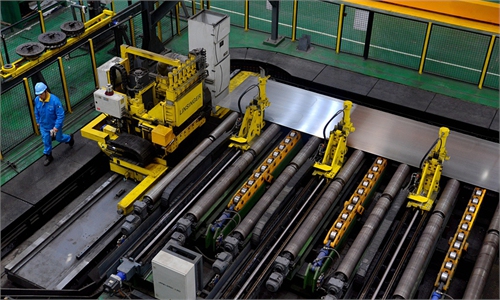
PMI Photo:VCG
China's manufacturing activity remained in expansion territory in June but showed a weakening trend, affected by repeated coronavirus flare-ups and supply chain disruption.The Caixin Manufacturing Purchasing Managers' Index (PMI), released on Thursday, dropped to 51.3 in June, the lowest level since April. The figure was 0.7 points down from May.
A reading above the 50 mark suggests growth, while a reading below 50 indicates contraction.
The Caixin survey, which focuses on smaller private firms, showed a similar trend as the official PMI, released by the National Bureau of Statistics (NBS) on Wednesday, which stood at 50.9 points in June, down 0.1 points from the previous month.
The expansion of manufacturing supply and demand continued to slow in June, according to the Caixin survey.
The production index, though still in expansion mode, recorded its lowest level since April. The resurgence of COVID-19 dragged down production and demand, according to companies that participated in the survey.
The growth of purchasing activity also slowed in June. Inventory shortages and logistics delays led to problems in the supply chain, said the companies.
Wang Zhe, a senior economist at Caixin Insight Group, said that while domestic and foreign COVID-19 outbreaks have had some adverse effects on the economy, the economic recovery momentum in the post-epidemic era is still in place.
The manufacturing industry is still expanding and the employment market continues to improve, said Wang.
The Caixin employment index in June stood at the highest point in seven months and stayed in expansion territory for a third month.
Some enterprises surveyed said that they plan to add capacity due to business expansion.
While prices remained at a high level, they slowed in June compared with May. The growth rate of raw materials prices such as metal and fuels significantly eased, according to the Caixin data.
Inflationary pressure has eased, but price indexes are still on the rise and shortages of raw materials persist, Wang said.
In the second half of the year, as the low base effect continues to weaken, the interweaving of an economic downturn and inflation pressure still poses a serious challenge, he said.



